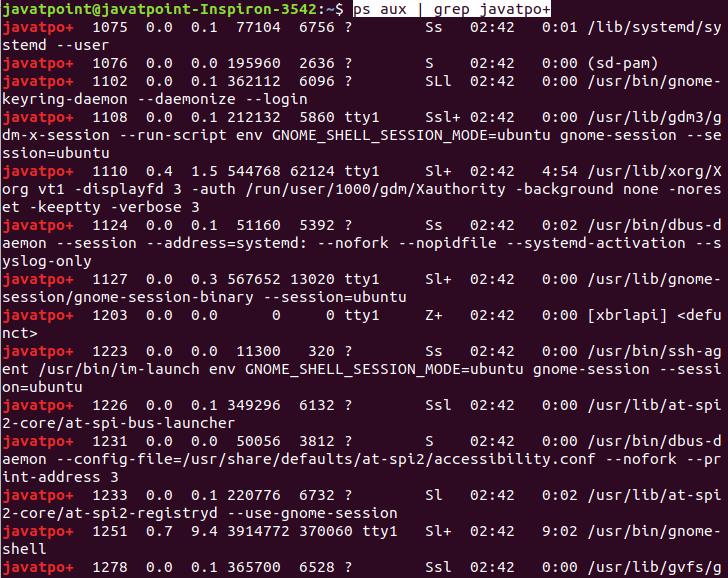

The default jps output provides the process identifier and the class name or Jar file name of each detected instance. $ jps -vĦ7604 jboss-modules.jar -D -Xms64m -Xmx512m -XX:MetaspaceSize=96M -XX:MaxMetaspaceSize=256m 4Stack=true =true -add-exports=sktop/sun.awt=ALL-UNNAMED -add-exports=java.naming/=ALL-UNNAMED -add-opens=java.base/java.lang=ALL-UNNAMED -add-opens=java.base/=ALL-UNNAMED -add-opens=java.base/java.io=ALL-UNNAMED -add-opens=java.base/curity=ALL-UNNAMED -add-opens=java.base/java.util=ALL-UNNAMED -add-opens=java.management/javax.management=ALL-UNNAMED -add-opens=java.naming/javax.naming=ALL-UNNAMED .file=/home/alan/wildfly/24.0.1/standalone/log/server.log nfiguration=file:/home/alan/wildfly/24.0.1/standalone/configuration/logging.properties This is useful, partly because it requires less typing. To view a similar output as seen in the ps command, use the -v option. The Java Virtual Machine Process Status (jps) tool allows you to scan for each running instance of the Java Virtual Machine (JVM) on your system. OpenJDK, however, has its very own specific process monitor. $ ps ax |grep javaĦ7604 pts/1 Sl+ 0:18 /usr/lib/jvm/java-11-openjdk-11.0.12.0.86_64/bin/java -D -server -Xms64m -Xmx512m -XX:MetaspaceSize=96M -XX:MaxMetaspaceSize=256m 4Stack=true =true -add-exports=sktop/sun.awt=ALL-UNNAMED -add-exports=java.naming/=ALL-UNNAMED -add-opens=java.base/java.lang=ALL-UNNAMED -add-opens=java.base/=ALL-UNNAMED -add-opens=java.base/java.io=ALL-UNNAMED -add-opens=java.base/curity=ALL-UNNAMED -add-opens=java.base/java.util=ALL-UNNAMED -add-opens=java.management/javax.management=ALL-UNNAMED -add-opens=java.naming/javax.naming=ALL-UNNAMED .file=/home/alan/wildfly/24.0.1/standalone/log/server.log nfiguration=file:/home/alan/wildfly/24.0.1/standalone/configuration/logging.properties -jar /home/alan/wildfly/24.0.1/jboss-modules.jar -mp /home/alan/wildfly/24.0.1/modules .standalone =/home/alan/wildfly/24.0.1 =/home/alan/wildfly/24.0.1/standalone You can use the ps command to view running Java processes on a system also by piping output to grep. It is the simplest way to view the running processes on your system.

On Linux, you can view processes with the ps command. They look at all processes on your computer so you can filter the list based on what you need to know. The utilities, such as those included in the procps-ng package, that monitor these processes tend to be intentionally generic. A process is spawned when you launch an application, but there are also many other processes running in the background of your computer, including programs to keep your system time accurate, to monitor for new filesystems, to index files, and more. A process is any ongoing event being managed by the kernel. On Linux, there are commands to view processes running on your system.


 0 kommentar(er)
0 kommentar(er)
